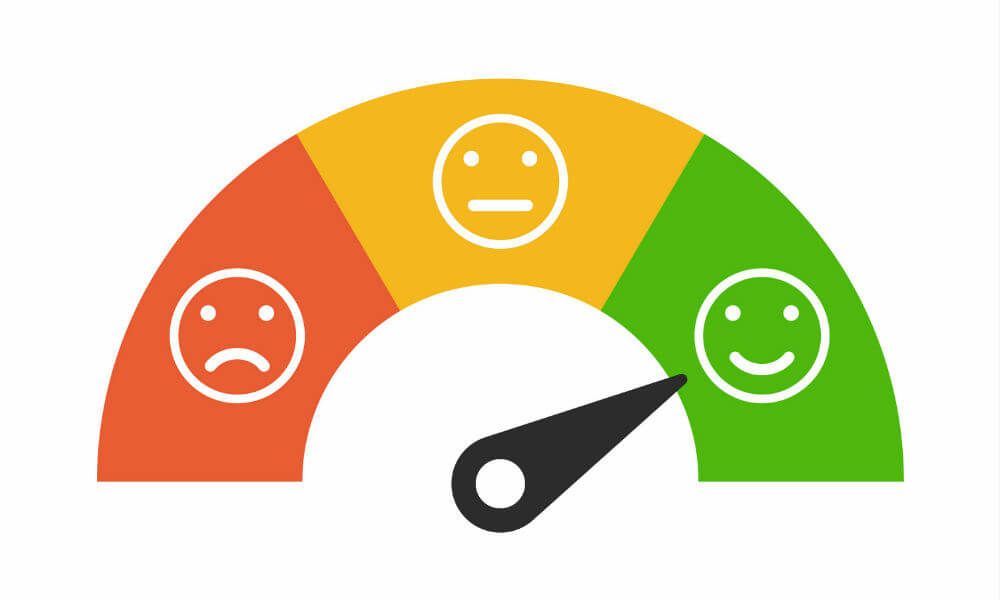This article was last updated in September, 2023.
Product success metrics are… Well, they’re required. Without them, what’s success? Can you really define it?
The thing with these metrics is that the answer isn’t clear.
I’ll give a really easy comparison:
Text your 3 closest friends and ask them what they define personal success as.
Each one will give you a different answer. And, before you know it, you’ll likely be having a conversation with them about the meaning of life itself…

Thankfully, having a SaaS or software business is a little more black and white than life itself. There are some general metrics for product success that are agreed upon and others that are worth considering for your unique business.
In this guide, we walk through how we define product success, what some KPIs are, and how you can track and analyze product success for a potential future exit (yep, acquisition!)
Table of Contents
- Metrics to Predict Product Success
- Metrics are not equal. Data does not equal data
- How to define metrics for a product? What’s the end goal?
- Product Success Metrics You Should Consider Tracking
- Again, metrics are just metrics. There’s a bigger story to tell

Quick Setup, Easy to Use, and Many Integrations
Manage your product announcements from a single place and easily distribute them
across multiple channels.

These product successes are important for a lot of reasons. Firstly, they are important decision-making points, because they can lead the company to better product decisions. Also, they can help product managers to get executive approval for the products easier.
Metrics to Predict Product Success
There are various types of product success metrics. There are metrics to predict the business success of a specific product or financial performance, metrics to improve user engagement, metrics to keep the user attention high and metrics to understand the user contentment. Now, we are going to look at all those product success metrics mentioned above and their examples.
Metrics are not equal. Data does not equal data.
Don’t track the wrong stuff.
We see it over and over again. Businesses get extremely excited about showing us their metrics.
“Look at this number!”
“Check out this graph!”
And then when you ask them “how’s your business’s health?” they say something like “well, we’re not profitable and if we don’t raise another substantial round in the next 6 months, then we’re going out of business.”
How to define metrics for a product? What’s the end goal?
Product goals usually directly align with business goals.
And there are many, many business goals.
Here’s a quick example of how a business goal may influence a product goal. Let’s use a SaaS company has a hypothetical example:
- Business Goal: Get acquired for $50M+ by 2027
- How to Reach Business Goal:
- Expected multiple of 6.5x revenue
- ARR needs to hit $7.7M (meaning MRR needs to hit $640,000)
- Product Goal to Reach Business Goal: Get as many users as possible as fast as possible and keep them as users.
- Product Metric 1: MRR and ARR moving towards $7.7M
- Product Metric 2: CAC < ARPU (meaning that for every customer you acquire, you make more revenue from them than it costs to acquire them)
- Product Metric 3: CLTV is at least 7x CAC (meaning that if you spend $200 to acquire a user, they will bring in a lifetime value of at least $1,400)
Now, these business goals and product metrics might look very different if someone instead has the business goal of…
“Build a lifestyle business where the business profits >$250,000/year and I can work less than 15 hours per week.”
Product Success Metrics You Should Consider Tracking
Revenue Product Metrics:

MRR (Monthly Recurring Revenue)
What is it?
Monthly Recurring Revenue (MRR) represents the predictable and consistent revenue generated from your subscription-based customers each month.
Why is it an Important Product Metric?
MRR is a crucial metric as it provides insight into the stability and growth potential of your business. It helps you understand the health of your subscription model and your ability to retain customers over time.
How do You Calculate it?
MRR can be calculated by adding up the recurring revenue from all active subscriptions within a given month.
How do You Track it?
You can track MRR using dedicated financial tools or subscription management platforms that allow you to monitor changes in your recurring revenue over time.
ARPU (Average Revenue Per User)
What is it?
Average Revenue Per User (ARPU) calculates the average revenue generated from each customer, giving you insights into the value each customer brings to your business.
Why is it an Important Product Metric?
ARPU helps you understand the overall revenue potential of your customer base and identifies segments that contribute the most to your revenue.
How do You Calculate it?
ARPU is calculated by dividing the total revenue by the total number of customers within a specific time frame.
How do You Track it?
ARPU can be tracked on a regular basis by aggregating revenue data and customer counts over time.
CLTV (Customer Lifetime Value)
What is it?
Customer Lifetime Value (CLTV) predicts the total value a customer will bring to your business over the course of their relationship with your company.
Why is it an Important Product Metric?
CLTV helps you understand the long-term impact of customer relationships and assists in making decisions related to customer acquisition and retention strategies.
How do You Calculate it?
CLTV can be calculated by multiplying the average purchase value, purchase frequency, and customer lifespan.
How do You Track it?
CLTV can be tracked by analyzing customer behavior and purchase patterns over time to refine your calculations.

Marketing Product Metrics:
Website Traffic
What is it?
Website traffic measures the number of visitors who access your website within a specific time frame.
Why is it an Important Product Metric?
Website traffic reflects the reach and visibility of your brand, indicating the effectiveness of your online presence and marketing efforts.
How do You Calculate it?
Website traffic can be calculated using tools like Google Analytics, which track the number of unique visitors over time.
How do You Track it?
Use website analytics tools to monitor and visualize trends in your website traffic, allowing you to make informed decisions.
Bounce Rate
What is it?
Bounce rate represents the percentage of visitors who leave your website after viewing only one page.
Why is it an Important Product Metric?
Bounce rate helps identify potential issues with website usability and content engagement, guiding improvements to enhance user experience.
How do You Calculate it?
Bounce rate is calculated by dividing the number of single-page visits by the total number of visits.
How do You Track it?
Monitor bounce rates through web analytics tools and assess how changes to your website impact user engagement.
CPL (Cost Per Lead)
What is it?
Cost Per Lead (CPL) calculates the average cost incurred to acquire a single lead through your marketing efforts.
Why is it an Important Product Metric?
CPL helps evaluate the efficiency of your lead generation campaigns, aiding in budget allocation and campaign optimization.
How do You Calculate it?
CPL is calculated by dividing the total cost of a marketing campaign by the number of leads generated.
How do You Track it?
Monitor campaign costs and leads generated to track CPL over various marketing initiatives.
CMQL (Cost per Marketing Qualified Lead)
What is it?
Cost per Marketing Qualified Lead (CMQL) measures the cost of acquiring leads that meet specific marketing criteria indicating potential for conversion.
Why is it an Important Product Metric?
CMQL helps assess the effectiveness of lead targeting and segmentation strategies, ensuring that acquired leads have higher conversion potential.
How do You Calculate it?
CMQL is calculated by dividing the total cost of a campaign by the number of leads that meet your marketing qualification criteria.
How do You Track it?
Monitor campaign results and the quality of leads generated to refine your lead acquisition strategies.
CSQL (Cost per Sales Qualified Lead)
What is it?
Cost per Sales Qualified Lead (CSQL) evaluates the cost of acquiring leads that meet sales-specific criteria indicating a higher likelihood of conversion.
Why is it an Important Product Metric?
CSQL helps align marketing efforts with sales objectives, ensuring that leads passed to the sales team are more likely to result in conversions.
How do You Calculate it?
CSQL is calculated by dividing the total campaign cost by the number of leads that meet your sales qualification criteria.
How do You Track it?
Regularly assess the alignment between marketing and sales criteria to refine your lead qualification process.
CAC (Customer Acquisition Cost)
What is it?
Customer Acquisition Cost (CAC) quantifies the average cost of acquiring a new customer, encompassing all marketing and sales expenses.
Why is it an Important Product Metric?
CAC provides insights into the efficiency of your customer acquisition strategies, helping you manage costs and optimize your sales funnel.
How do You Calculate it?
CAC is calculated by dividing the total cost of marketing and sales activities by the number of new customers acquired.
How do You Track it?
Continuously monitor the costs associated with acquiring customers and assess how changes impact your CAC.
Product Customer Satisfaction Metrics:

NPS (Net Promoter Score)
What is it?
Net Promoter Score (NPS) measures customer loyalty by asking how likely customers are to recommend your product or service to others.
Why is it an Important Product Metric?
NPS provides insights into customer satisfaction and loyalty, guiding efforts to improve customer experience.
How do You Calculate it?
NPS is calculated by subtracting the percentage of detractors (those unlikely to recommend) from the percentage of promoters (those likely to recommend).
How do You Track it?
Collect NPS data through surveys and track changes over time to gauge improvements in customer sentiment. AnnounceKit actually has an awesome NPS software that you can easily implement.

Daily Active User (DAU) / Monthly Active User (MAU) Ratio
What is it?
The DAU/MAU ratio compares the number of daily active users to the number of monthly active users, indicating the frequency of user engagement.
Why is it an Important Product Metric?
This ratio reflects user engagement patterns, helping you understand the consistency of user interaction with your product.
And if you have engaged users, it means that you can get in front of them more often. For example, if you launch a new feature (that may even require an additional investment… cough cough increased CLTV cough cough), then you have the opportunity to engage them through a release notes tool so they will actually see your new features and releases.
How do You Calculate it?
Calculate DAU by counting the number of unique users in a day and MAU by counting the number of unique users in a month. Divide DAU by MAU and multiply by 100 to get the ratio.
How do You Track it?
Regularly monitor DAU and MAU figures and use the ratio to assess changes in user engagement behavior.
Again, metrics are just metrics. There’s a bigger story to tell.
Let’s say you’ve got an awesome CAC (Customer Acquisition Cost).
But people aren’t actually engaging with your product.
👆If that’s the case, you’re not going to have a sustainable business, even though one product success metrics looks really healthy.
Remember that metrics are important but they are not the end-all-be-all.






